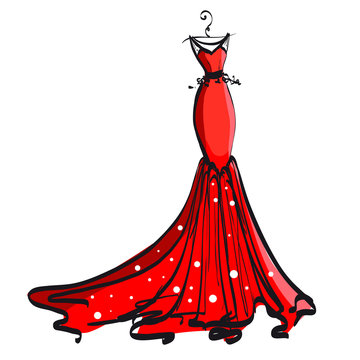
1. Market Research
Understanding Trends
Current Fashion Trends: Analyze the latest fashion shows, bridal magazines, and online platforms to identify popular styles, colors, and materials.
Consumer Preferences: Conduct surveys and focus groups to gather insights on what brides and their parties are looking for in wedding attire.
Competitive Analysis: Study successful brands and their offerings to understand what works in the market.
Identifying Gaps
Unmet Needs: Look for areas where current offerings fall short, such as size inclusivity, sustainability, or affordability.
Unique Selling Points: Determine what can set your designs apart, whether it's innovative materials, unique styles, or customization options.
2. Theme Creation
Seasonal Themes
Spring/Summer: Light fabrics, pastel colors, floral patterns, and airy designs.
Fall/Winter: Rich fabrics, deep jewel tones, long sleeves, and layered designs.
Wedding Styles
Traditional: Classic silhouettes, elegant materials like silk and lace, and timeless colors.
Modern: Sleek lines, minimalistic designs, bold colors, and unconventional fabrics.
Boho: Flowy materials, relaxed fits, earthy tones, and intricate details like crochet and embroidery.
Vintage: Retro cuts, vintage fabrics, and old-world charm with lace, tulle, and unique accessories.
Special Occasions
Destination Weddings: Lightweight, packable fabrics, and comfortable yet stylish designs suitable for various climates.
Themed Weddings: Dresses that fit specific themes such as rustic, beach, or fairy-tale weddings.
3. Design Ideation
Sketching and Visualization
Initial Sketches: Create rough sketches to visualize different ideas and concepts.
Mood Boards: Compile images, fabrics, colors, and patterns that inspire the collection.
Prototyping: Develop initial prototypes to test the feasibility of designs and refine them based on feedback.
Collaboration
Design Team: Work closely with a team of designers, pattern makers, and seamstresses to bring ideas to life.
Consulting Experts: Collaborate with bridal consultants, fashion experts, and fabric suppliers to ensure the designs meet industry standards and consumer expectations.
4. Material Selection
Quality and Comfort
High-Quality Fabrics: Choose materials that are luxurious, durable, and comfortable for all-day wear.
Sustainable Options: Consider eco-friendly materials like organic cotton, recycled polyester, and ethical silk to appeal to environmentally conscious consumers.
Color Palette
Timeless Colors: Classic shades like ivory, champagne, blush, and navy.
Trend Colors: Incorporate current trendy colors to keep the collection fresh and modern.
Fabric Characteristics
Breathability: Ensure fabrics are breathable, especially for summer weddings.
Stretch and Flexibility: Use fabrics with some stretch to accommodate movement and ensure a comfortable fit.
Texture and Finish: Choose fabrics with a variety of textures and finishes to add depth and interest to the designs.
5. Personalization and Customization
Customization Options
Custom Colors: Offer a range of color options to match the wedding theme.
Personalized Details: Include options for monograms, custom embroidery, and unique embellishments.
Made-to-Measure: Provide custom sizing and tailoring to ensure a perfect fit for every member of the wedding party.
Interactive Design
Virtual Try-Ons: Utilize technology to allow customers to see how different designs and colors will look on them.
Design Consultations: Offer personalized design consultations to help customers choose the perfect dresses for their wedding party.
6. Sustainability and Ethical Practices
Eco-Friendly Materials
Organic Fabrics: Use organic cotton, hemp, and other sustainable materials.
Recycled Fabrics: Incorporate recycled polyester and other eco-friendly options.
Low-Impact Dyes: Choose dyes that are environmentally friendly and safe.
Ethical Manufacturing
Fair Labor Practices: Ensure that all workers involved in the production process are paid fairly and work in safe conditions.
Local Production: Consider producing locally to reduce carbon footprint and support local economies.
Sustainable Packaging
Eco-Friendly Packaging: Use recyclable or biodegradable packaging materials.
Minimalist Packaging: Reduce the amount of packaging to minimize waste.
Conclusion
Concept development for wedding party dresses involves a meticulous process of research, creativity, and collaboration. By understanding market trends, identifying gaps, and creating themes that resonate with consumers, designers can develop compelling concepts that translate into beautiful, functional, and desirable dresses. Focusing on high-quality materials, personalization options, and sustainable practices will further enhance the appeal and success of the collection.